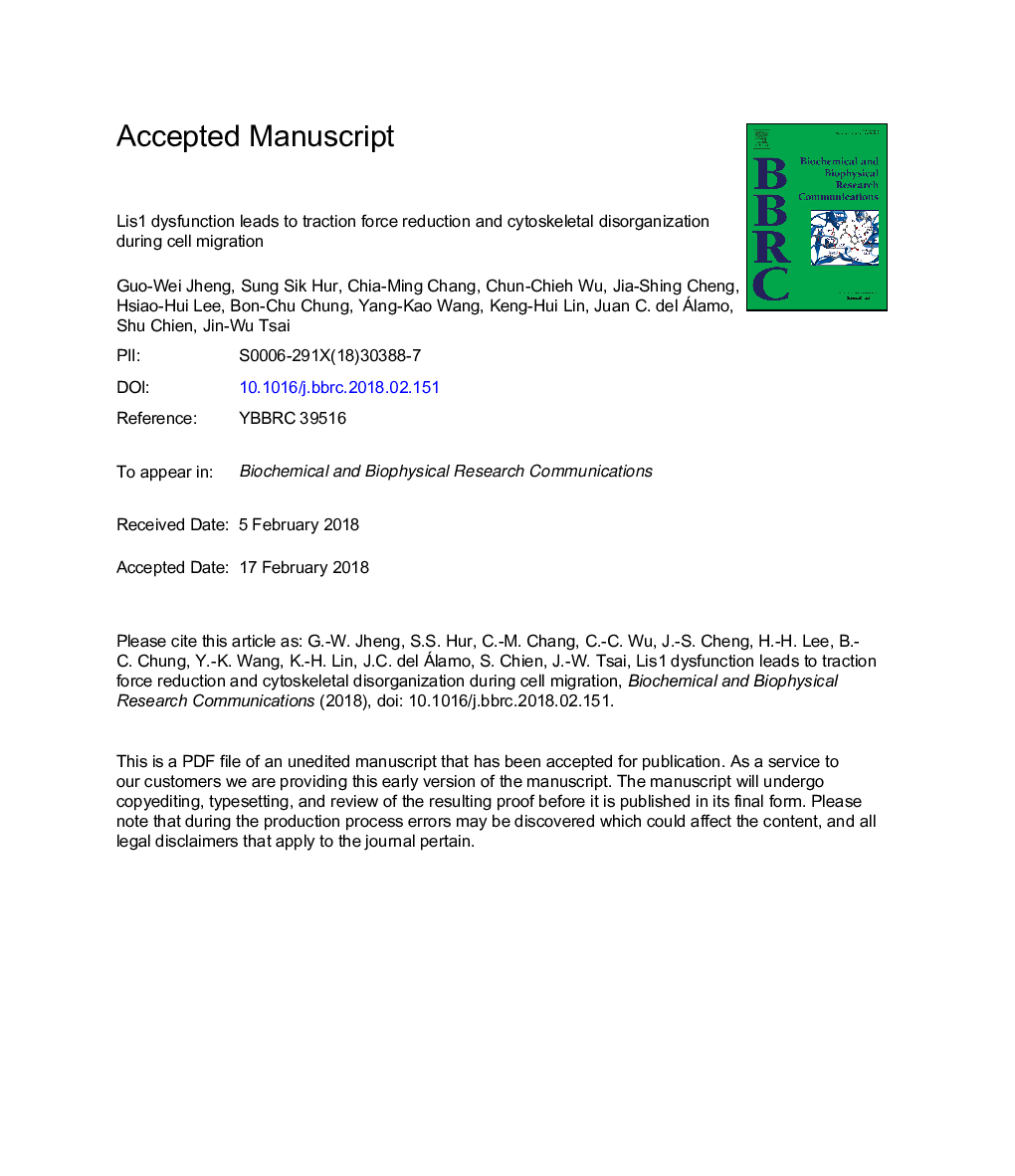| کد مقاله | کد نشریه | سال انتشار | مقاله انگلیسی | نسخه تمام متن |
|---|---|---|---|---|
| 8293861 | 1536749 | 2018 | 27 صفحه PDF | دانلود رایگان |
عنوان انگلیسی مقاله ISI
Lis1 dysfunction leads to traction force reduction and cytoskeletal disorganization during cell migration
ترجمه فارسی عنوان
اختلالات لیز 1 منجر به کاهش نیروی کشش و اختلال در تشکیل سلولهای سی تی اسکن در طی مهاجرت سلولی می شود
دانلود مقاله + سفارش ترجمه
دانلود مقاله ISI انگلیسی
رایگان برای ایرانیان
کلمات کلیدی
موضوعات مرتبط
علوم زیستی و بیوفناوری
بیوشیمی، ژنتیک و زیست شناسی مولکولی
زیست شیمی
چکیده انگلیسی
Cell migration is a critical process during development, tissue repair, and cancer metastasis. It requires complex processes of cell adhesion, cytoskeletal dynamics, and force generation. Lis1 plays an important role in the migration of neurons, fibroblasts and other cell types, and is essential for normal development of the cerebral cortex. Mutations in human LIS1 gene cause classical lissencephaly (smooth brain), resulting from defects in neuronal migration. However, how Lis1 may affect force generation in migrating cells is still not fully understood. Using traction force microscopy (TFM) with live cell imaging to measure cellular traction force in migrating NIH3T3 cells, we showed that Lis1 knockdown (KD) by RNA interference (RNAi) caused reductions in cell migration and traction force against the extracellular matrix (ECM). Immunostaining of cytoskeletal components in Lis1 KD cells showed disorganization of microtubules and actin filaments. Interestingly, focal adhesions at the cell periphery were significantly reduced. These results suggest that Lis1 is important for cellular traction force generation through the regulation of cytoskeleton organization and focal adhesion formation in migrating cells.
ناشر
Database: Elsevier - ScienceDirect (ساینس دایرکت)
Journal: Biochemical and Biophysical Research Communications - Volume 497, Issue 3, 11 March 2018, Pages 869-875
Journal: Biochemical and Biophysical Research Communications - Volume 497, Issue 3, 11 March 2018, Pages 869-875
نویسندگان
Guo-Wei Jheng, Sung Sik Hur, Chia-Ming Chang, Chun-Chieh Wu, Jia-Shing Cheng, Hsiao-Hui Lee, Bon-Chu Chung, Yang-Kao Wang, Keng-Hui Lin, Juan C. del Álamo, Shu Chien, Jin-Wu Tsai,
